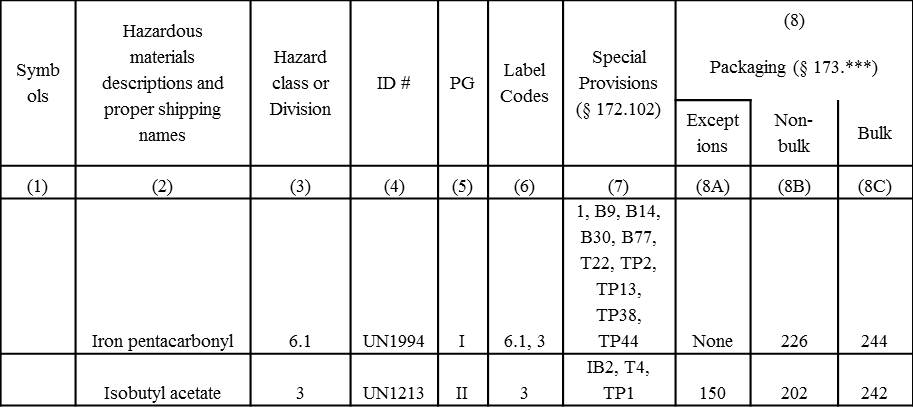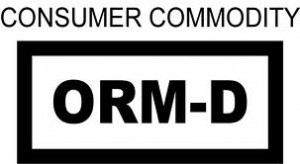A substance or material that the US DOT has determined is capable of posing an unreasonable risk to health, safety, and property will be regulated as a Hazardous Material when offered for transportation or transported in commerce. Some Hazardous Materials are granted an exception from full regulation under the Hazardous Materials Regulations (HMR) if the US DOT believes that under certain specified combinations of packaging, quantity, or form it poses a low enough risk to preclude the need for full regulation. One example of such an exception is the Consumer Commodity Exception.
The Consumer Commodity Exception is designed to allow for the transportation in commerce of hazardous materials: bleach, drain cleaners, solvents, aerosols, etc. in small packagings (Limited Quantities) as long as those materials are, or similar to, the consumer products you see on retail store shelves. The process to determining if a hazardous material may be shipped as a Consumer Commodity involves several steps, they are briefly outlined below:
- The hazardous material must first be eligible for the Limited Quantity Exception; the applicability of the Limited Quantity Exception is indicated in Column 8A of the Hazardous Materials Table @ 49 CFR 172.101 for each entry. If it is available, Column 8A will reference the Section of Part 173 of Title 49 CFR that includes the requirements for shipping the hazardous material as a Limited Quantity. An example of a hazardous material that may not use the Limited Quantity Exception is: Iron Pentacarbonyl; one that may is: Isobutyl Acetate (refer to §173.150 for more information on shipping this HazMat as a Limited Quantity).

- In the example of Isobutyl Acetate in the Hazardous Materials Table, a shipper will need to comply with all the requirements of §173.150 in order to ship the HazMat in compliance with the Limited Quantity Exception.
- If the Limited Quantity Exception is available and it also meets the definition of a Consumer Commodity you may then change its shipping name to Consumer Commodity and its hazard class to ORM-D. A Consumer Commodity is defined at §171.8:
Consumer commodity means a material that is packaged and distributed in a form intended or suitable for sale through retail sales agencies or instrumentalities for consumption by individuals for purposes of personal care or household use. This term also includes drugs and medicines.
The Hazardous Materials Table entry for a Consumer Commodity looks like this:
Symbols | Hazardous materials descriptions and proper shipping names | Hazard class or Division | ID# | PG | Label Codes | Special Provisions (§ 172.102) | (8) | ||
Packaging (§ 173.***) | |||||||||
Exceptions | Non-bulk | Bulk | |||||||
(1) | (2) | (3) | (4) | (5) | (6) | (7) | (8A) | (8B) | (8C) |
D | Consumer commodity | ORM-D | None | 156, 306 | 156, 306 | None | |||
Benefits to use of the Consumer Commodity Exception include:
- No placards.
- No shipping papers.
- No labels.
- Strong outer packaging acceptable instead of specification packaging.
- No marking, other than ORM-D or ORM-D Air as applicable.
Unfortunately, the Consumer Commodity Exception and the ORM-D hazard class are not acceptable for international shipments of hazardous materials. In order to bring our regulations into alignment with the rest of the world, the US DOT is currently phasing out ORM-D and the Consumer Commodity Exception and replacing it with a revised Limited Quantity Exception on the following schedule.
- ORM-D-Air not acceptable for use after 12.31.12.
- ORM-D not acceptable for use after 12.31.13. US DOT has proposed extending this deadline to 12.31.15.
READ HERE HOW USE OF THE CONSUMER COMMODITY EXCEPTION HAS BEEN EXTENDED UNTIL THE END OF 2020.
I recently conducted on-site training for a facility that manufactured and shipped Consumer Commodities. This change to the regulations had a significant impact on their business, but with training and a productive Q & A session, I feel confident I left them with a path forward thr0ugh this revision to the regulations. Contact me and let me know how this change to the HMR will affect your operations and if you have any questions for me.



